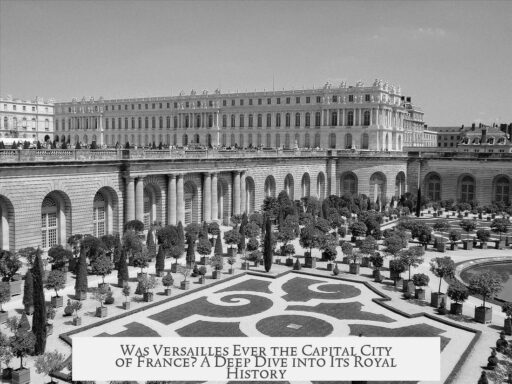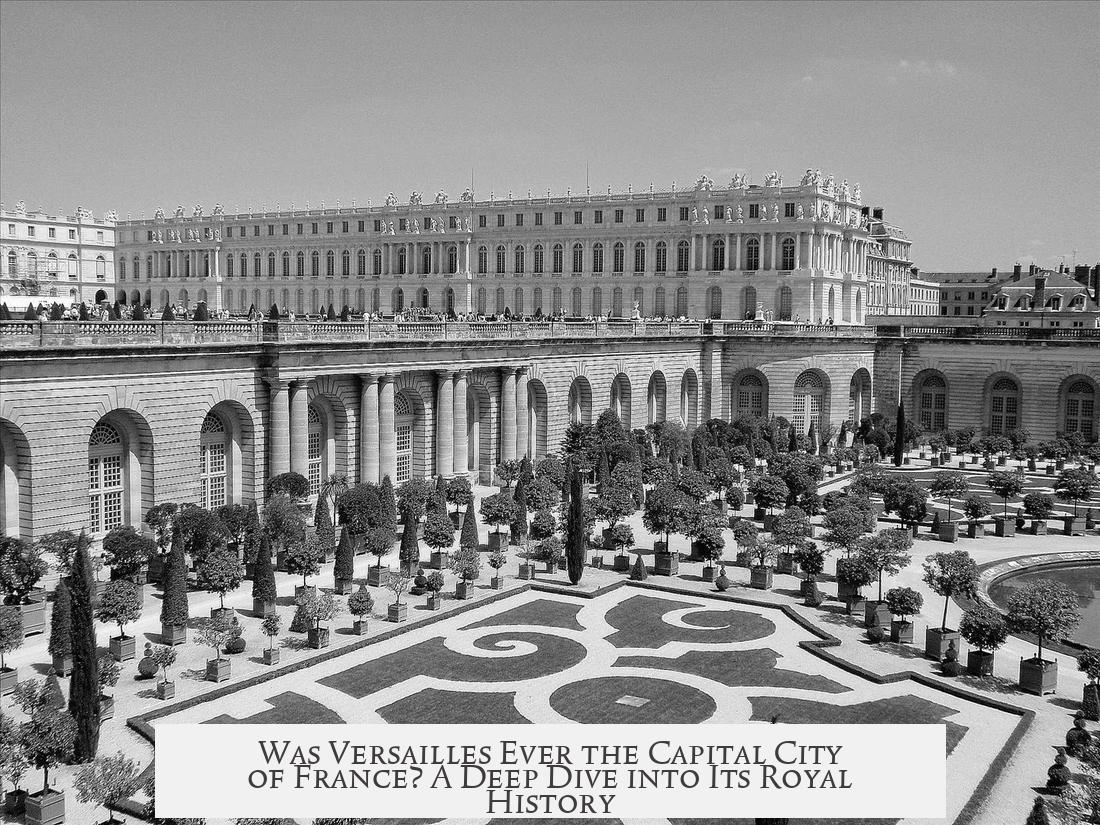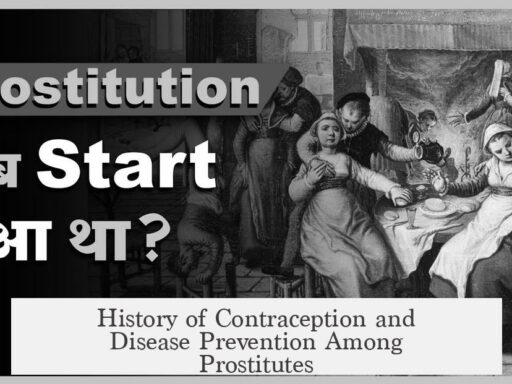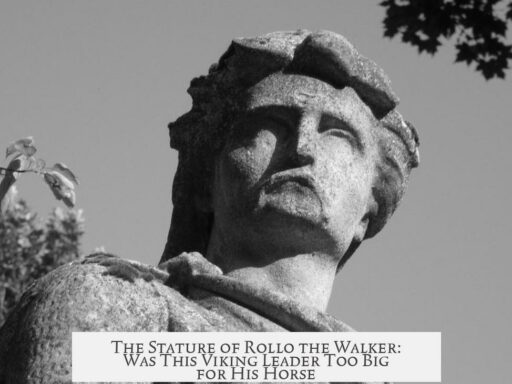Versailles is not officially recognized as a former capital city of France, but it had a unique, quasi-capital role between 1722 and 1789. During this period, the French government’s operations centered around the king’s residence at Versailles. In the context of an absolute monarchy like Bourbon France, the monarch’s permanent residence largely defined the capital’s location. Hence, Versailles functioned similarly to a capital by serving as the seat of royal power and administration.
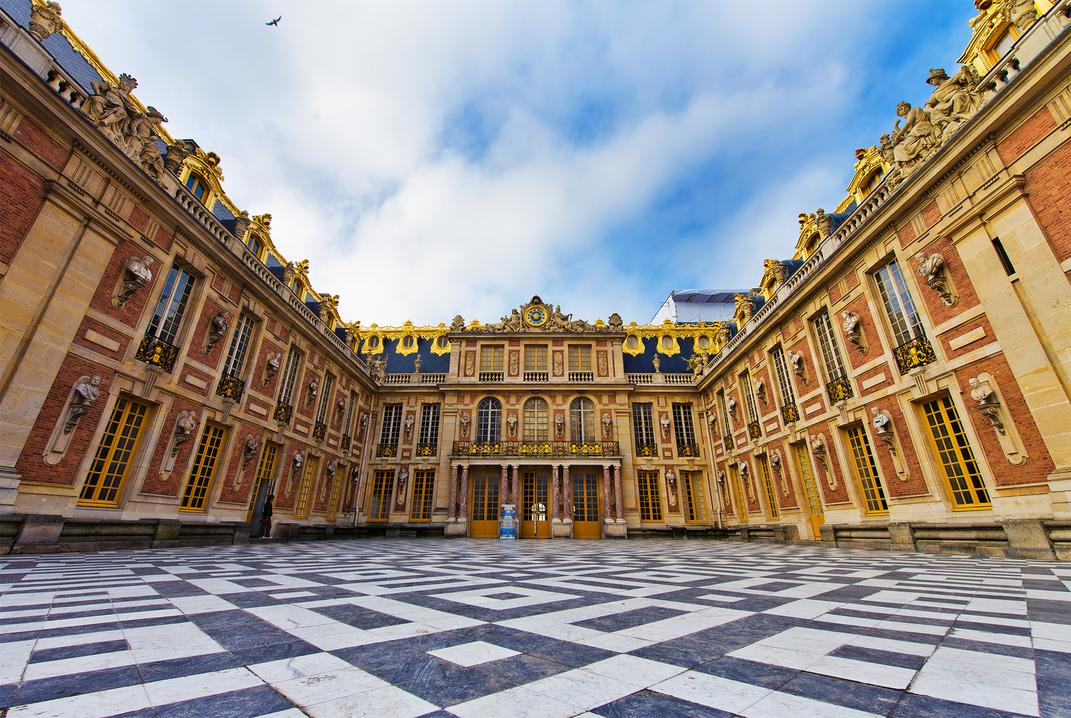
However, calling Versailles the capital requires caution. The traditional and official capital of France remained Paris, which held enduring importance politically, economically, and socially. Paris was by far the largest city throughout the 18th century. Its population dwarfed that of Versailles. Moreover, Paris was the major economic hub, with many luxury industries supporting both the Parisian economy and the nobility at Versailles.
Many nobles who lived part-time in Versailles maintained residences in Paris. This practice reflected Paris’s continued role as a vital center for social and political life. Even while the monarchy centered its formal activities at Versailles, Paris retained pre-eminence as the national capital and main urban center.
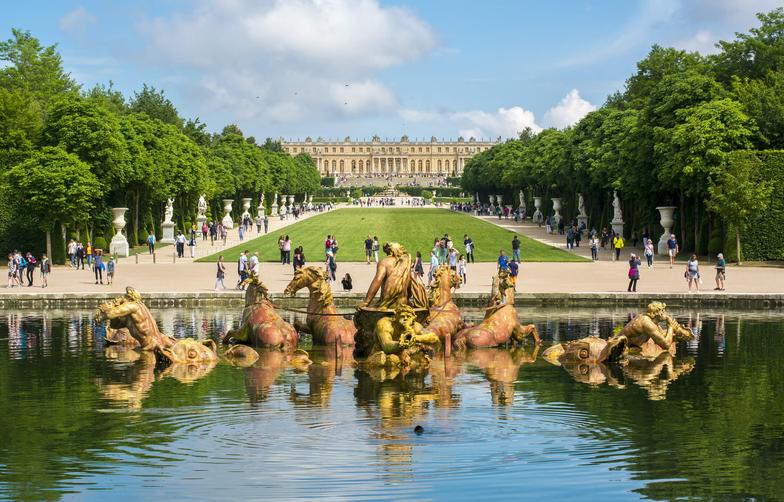
| Aspect | Versailles (1722–1789) | Paris |
|---|---|---|
| Political Role | Monarch’s royal residence and seat of government activities | Official capital, primary political hub |
| Population | Smaller, primarily nobility and court officials | Largest French city with a diverse population |
| Economic Importance | Supported by luxury industries linked to the nobility | Main economic center with broad industries |
| Nobility Presence | Royal court and wealthy nobles permanently residing | Many nobles kept residences to maintain social ties |
The case of Versailles underscores how capital status, especially under absolute monarchy, can be nuanced. While Versailles was the royal power seat, Paris remained the heart of France’s political, economic, and social life until after the French Revolution.
- Versailles served as the royal residence and government center from 1722 to 1789.
- Paris was the official capital with larger population and stronger economic role.
- The monarchy’s residence heavily influenced claims of capital status.
- Many nobles maintained homes in both Versailles and Paris.
- Versailles’ role was significant but did not replace Paris as France’s capital.
Is Versailles the Former Capital City of France? Unpacking the Royal Mystery
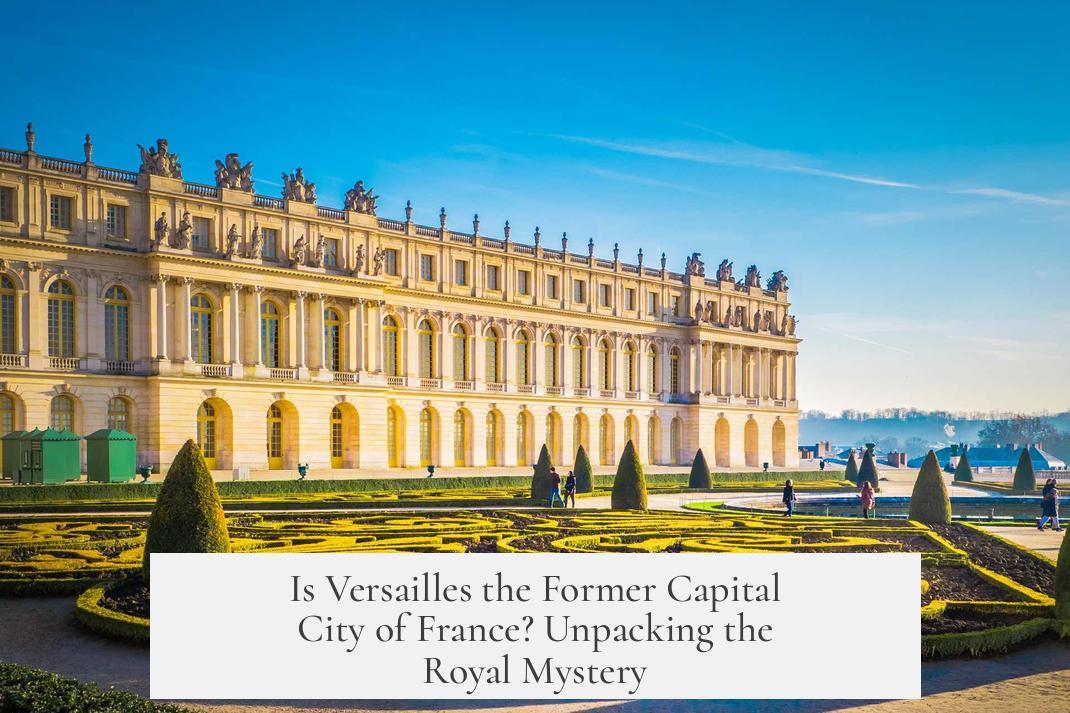
Is Versailles the former capital city of France? The quick answer: sort of, but not exactly. Let’s break down this royal riddle with clarity, history, and a dash of wit.
At first glance, one might think the French capital has always been Paris. Yet, between 1722 and 1789, something unusual happened. The king and his court moved to Versailles, and with them, much of the government machinery. So, did Versailles become the capital? Maybe in a de facto sense, but official titles and historical caution say otherwise.
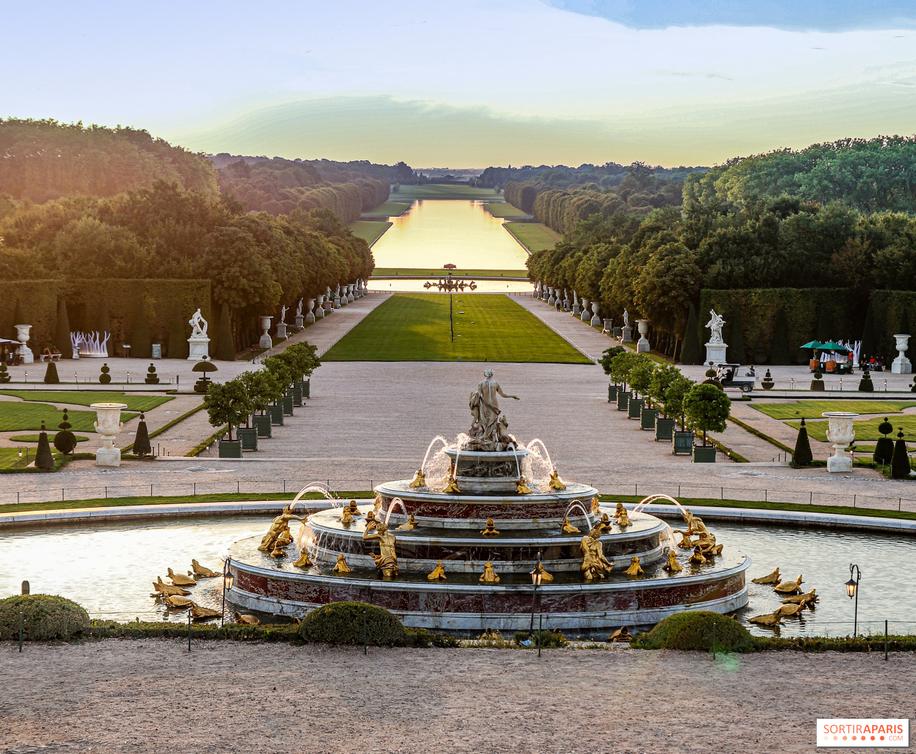
The Royal Residence: Where the Heart of Power Resides
France back then was an absolute monarchy under the Bourbons. That means the king held supreme power, centralizing governance completely around his person. If the king lives somewhere, that place isn’t just a residence; it’s the power hub. So, when Louis XIV moved his court to Versailles, the government essentially followed.
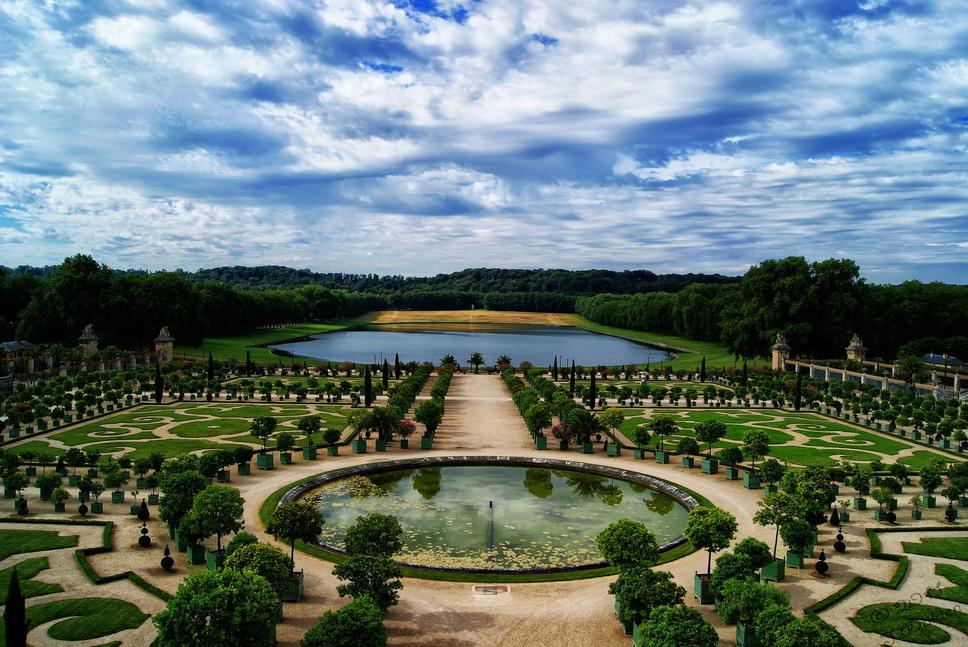
This arrangement means Versailles operated like a capital city despite not being named one. The machinery of state — ministers, council meetings, administrative offices — revolved around the king’s new home. The monarch’s permanent residence had undeniable claims to being the seat of power. It’s like if your CEO moves their office downtown: naturally, the business shifts with them.
But Wait—Paris Didn’t Hand Over the Crown Easily!
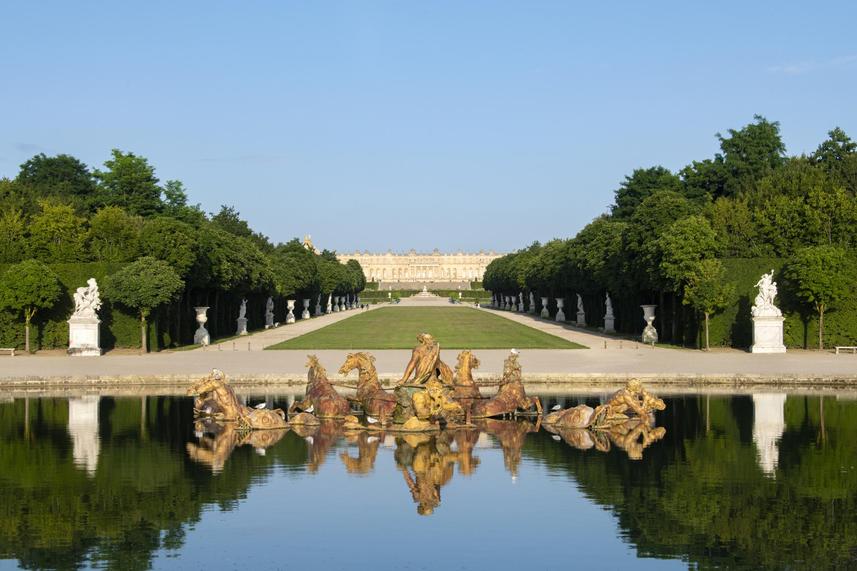
Here’s where history gets spicy. Though Versailles housed the royal court and government operations, Paris didn’t simply fade away into the shadow of the palace gardens. Paris retained its status as France’s largest city by far, bustling with life, commerce, and culture.
The population figures tell the tale. Throughout the 18th century, Paris was home to millions—far more than Versailles could boast. It remained the financial and cultural heartbeat of the kingdom. Luxury industries in Paris sustained the nobility living in Versailles, creating a vibrant economic loop between the two.
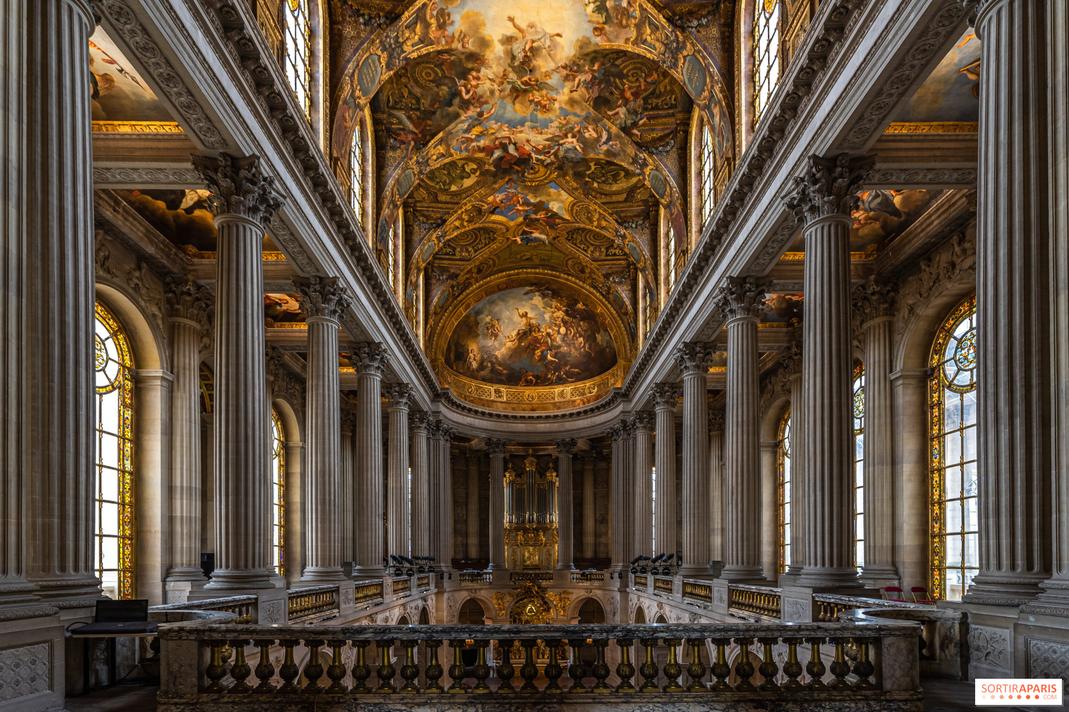
Think of it like two major hubs: Versailles was the political and royal nerve center, while Paris stayed the cultural, economic, and social powerhouse. The king might have been the star of the show at Versailles, but Paris was the city that buzzed with everyday French life.
Nobles’ Second Homes: The Tale of Two Cities
Interestingly, nobles who weren’t rich enough for a permanent Versailles residence often maintained townhouses or apartments in Paris. This dual existence shows how Paris kept importance in political and social spheres. It’s like having a summer home and a city apartment—both serve different roles but remain essential.
This arrangement reinforced Paris as a persistent stage for political activity and society gatherings, even while the monarchy’s official daily business occurred at Versailles. So, even in the golden age of Versailles, the bigger picture reveals Paris still ruled France’s urban landscape.
Why Does This Matter Today?
You might be wondering: why does the question of Versailles’ capital status matter? If you visit France today, Paris undeniably remains the capital. Versailles is famous mostly for its majestic palace and gardens. Yet the story between 1722 and 1789 showcases how political geography can be complex.
This history helps tourists and historians alike understand the nuanced power dynamics of pre-Revolutionary France. It also shows how concepts like “capital city” are not always clear-cut, especially in monarchies where power literally follows the person of the ruler.
For students of history, this duality sparks fascinating questions: What makes a capital city? Is it politics, population, economy, or something more symbolic? Versailles challenges the standard notion by reminding us that capitals can be as much a function of royal presence as geography.
To Sum It Up: The Unique Status of Versailles
- Versailles was the monarch’s home from 1722–1789. The government moved there with him, giving it a de facto capital vibe.
- Paris remained pre-eminent in size and economy. It was the largest city and economic powerhouse during this period.
- Many nobles lived in both cities. Their residences in Paris highlight its ongoing political and social significance.
- The term “capital” is used cautiously. Versailles is not officially the former capital but holds a unique status tied closely to the king’s residency.
So, no clear “former official capital” title for Versailles, but definitely a prime contender for the throne of de facto capitals.
Tips for the Curious Traveler or History Buff
If you ever visit Versailles, don’t just admire the ornate palace and gardens. Think about the power plays that happened under those gilded ceilings. Remember, the king’s move turned this town into the beating heart of the French monarchy for decades.
Then hop back to Paris. Feel the difference between the political crown and the city that wears the economic and cultural jewels. This dual experience brings 18th-century France alive like a real historical drama.
Final Thought
In history, there’s rarely a simple answer. Versailles sits somewhere between royal palace and capital city, a reminder that power’s location isn’t always where the population lives. This insight can help us question modern capitals, too. How often does power truly rest where the government is headquartered? Or does it drift with leaders like it did in Bourbon France?
Now, isn’t that a juicy historical conundrum worth exploring over a café in Paris or a stroll through Versailles’ Hall of Mirrors?
